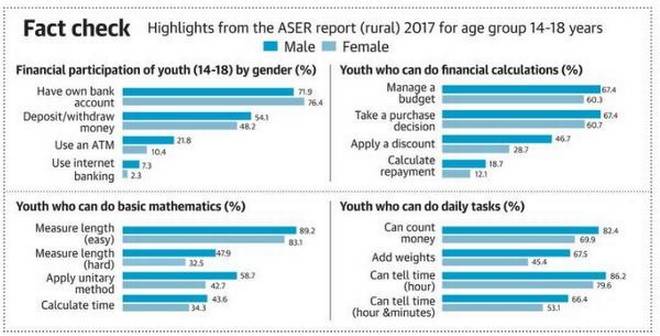Fourteen per cent of rural youth in the age group of 14-18 failed to identify the map of India, says the 2017 Annual Status of Education Report (ASER), brought out by Pratham.
Significantly, 36% of those surveyed did not know that Delhi is the capital of India.
The report underlines, that 79% answered the questions ‘Which State do you live in?’ and 42 % could point to their home State on the map.
Change in focus
“ASER 2017 focuses on an older age group: youth who are 14 to 18 years old,” the report says. “The survey looks ‘Beyond Basics’, exploring a wider set of domains beyond foundational reading and arithmetic in an attempt to throw light on the status and abilities of youth in this age group.”
Whereas previous ASER reports have reached almost all rural districts in the country to generate estimates that are considered representative at district, State, and national levels, ASER 2017 was conducted in 28 districts spread across 24 States and generated only district level estimates.

Tapering enrolment
“Most 14-18 year olds are in the formal education system — only 14.4% are not currently enrolled in school or college. However, this number varies a lot with age,” says the report. “At age 14, only 5.3% are not enrolled, but by age 17 this percentage quadruples to 20.7% and further increases to 30.2% at age 18. With almost 10% of India’s population in this age group, these percentages translate into large numbers of youth who are not in the formal education system,” the report says
The report also highlights the gender aspect of enrolment, with the number of girls falling sharply with age. While the enrolment ratios for boys and girls are almost the same at 14, at 18 years 32% of girls are not enrolled, as against 28% for boys.
“About 25% of this age group still cannot read basic texts fluently in their own language. More than half struggle with division (3 digit by 1 digit) problems. Only 43% are able to do such problems correctly,” the report reveals. “53% of all 14 year-olds in the sample can read English sentences.”
Thank you for reading the story until the very end. We appreciate the time you have given us. In addition, your thoughts and inputs will genuinely make a difference to us. Please do drop in a line and help us do better.
Regards,
The CSR Journal Team

